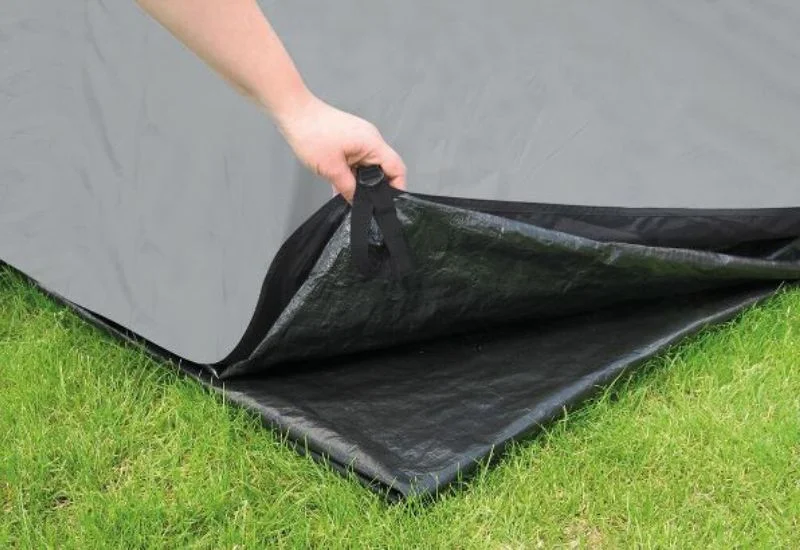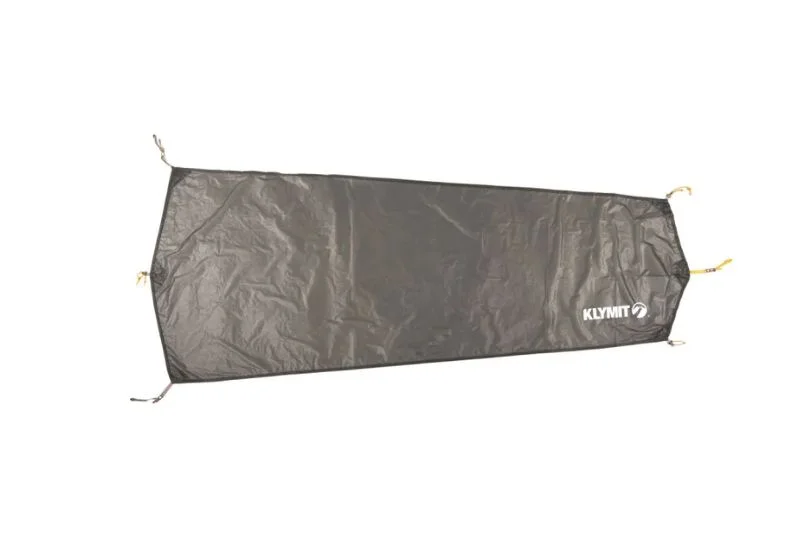
Edited by Abdullah Faraz on July 26, 2024
The most common question for veteran and newbie campers is whether we need a footprint. Some are like, What in the world is a tent footprint? We have already bought tent packs for camping. The use of tent footprints is a subject of debate.
To answer, yes, you do need a tent footprint for camping. Whatever your thoughts on this, carrying a tent footprint for camping or hiking is beneficial.
This blog post will help you understand the actual purpose and usage of tent footprints. Key components like types, toughness, composition, and weight are discussed in detail.
Let’s settle the debate of tent footprint once and for all.
Introduction to Tent Footprint
A tent footprint is a lightweight ground cloth or plastic sheet that rests between your tent’s bottom and the ground. These are usually made from durable, waterproof, and tear-resistant materials like nylon, oxford cloth, polyester, polyethylene, etc.
It is the most basic functional material that people need to focus on. It protects the bottom surface of the tents. It is available in various sizes and shapes to fit under your tents.
Do You Need a Tent Footprint?
If you want to increase your tent’s shelf life, buying one for your tent is essential. It is easy to replace the footprint rather than buying a new tent. It protects the bottom layer of the tent and is easily replaceable.
It is crucial for you to check whether your tent requires a footprint or not. If they do, then this is the basic requirement to get one for yourself1.
Rugged Tents
If you have a rugged waterproof tent floor, then there is no need for you to buy a tent footprint. On the other hand, ultralight tents are made of lightweight materials that wear out with time. It is essential to purchase a tent footprint to prolong the tent’s life.
Ground Threats
Every day dirt and small rocks wear out the tent’s surface with time. In this scenario, the tent footprint serves as a lifesaver. It keeps the tent surface clean and waterproof.
Sharp rocks and sticks can tear the surface of the tent. The stretching of the tent on uneven surfaces is also a cause. It is feasible to use a tent footprint as it can protect the bottom of the tent.
The ground surface is quite cold in hilly areas. An extra layer of insulation will keep your tent warm and safe.
How to Use a Tent Footprint?

A tent footprint is an important piece of ground protection to increase the life of your tent. Usage of ground cloth depends on how much you put into buying it.
Expensive materials come with strong protective layers and side holes to keep the cloth intact on the ground. You can also make a tent footprint on your own. It depends on where you are camping. Hilly areas require thick padded sheets as footprints.
Using Multiple Sheets
Some folks use multiple sheets beneath their tents. It is mainly observed in colder environments. A sheet is laid on the ground where the tent will be set up.
It keeps water out of the tent’s interior. Another sheet is placed inside the tent that covers all the area.
Notably, The entire area needs to be covered with sheets. Otherwise, water can move in from one of the corners, failing to serve its purpose. It is ideal to purchase or form a footprint according to the inner side of the tent.
Standard Procedure of Usage
It is effortless to use a footprint while camping. Follow the easy steps below, and your tent will be double protected from any damage.
- Unpack your tent and other required essentials.
- Select a flat camping site without any large rocks, sticks, and water.
- Lay out the footprint on the ground.
- Fix the tent on top of the ground cloth.
- Use buckles, loops, or grommets to connect the footprint with the tent.
SUMMARY
Maximize your tent’s lifespan with a footprint, the essential ground protector. Choose a footprint suited to your camping environment for optimal protection. Simply lay it out, place your tent on top, and secure it for added durability and comfort.
Materials Used in Making a Tent Footprint

People use various alternative materials as ground cloths. Some materials rightfully serve this purpose while they either are so thin that the hard ground tears them or they are no longer feasible to use.
Purchasing ground cloth costs more, and people often need to pay more attention to its use. Also, you must provide the tent design to form the ground cloth the same size. This makes it expensive, but it is long-lasting and protects your tent from harsh conditions.
You can make your footprint. It is super easy and practical as well. The following common materials are used in making ground cloth.
Nylon
It is the most common material used in the manufacturing of tents. A coat of polyurethane on the nylon fabric makes it waterproof and tear-resistant. Overall, the fabric is very lightweight that allows you to carry the tent footprint with ease.
Tyvek
Tyvek is a synthetic material made by using polyethylene fibers. It blocks the crossing of air and allows the movement of water vapors through it. It is lightweight, flexible, and easy to handle.
Tyvek sheets are preferable as house wraps and also have medical packaging applications. It is not very expensive so you can buy it easily.
Cutting and installing grommets onto the Tyvek sheet is an easy process, after which it is usable as a tent footprint.
Tarpaulin
Tarpaulin, also known as a tarp, is a waterproof sheet used as a protective cover for outdoor building materials, vehicles, and other large essentials.
Tarp has two variants: light and rugged tarp. The lighter tarp is effective to use as a ground cloth. It is flexible, tear-resistant, and water-resistant. Different polymers are used during the synthesis process of tarp. Polyethylene, nylon, canvas, or polyester are suitable for making tarpaulin.
The price of the tarp varies depending on the purity of used chemicals and the overall dimensions of the sheet. You can buy a piece of tarp sheet that fits the dimensions of your tent.
Polycro
Polycryo or polycro is a clear plastic material that is puncture-resistant. It is made of industrial-grade polyolefins, which is why it has greater strength and flexibility than any other plastic sheet material.
It is widely used in the synthesis of backpacks and other outdoor products. It protects your tent much like that of a Tyvek sheet. You can also use it as a cover for your house windows.
Polycro is expensive compared to other materials mentioned above. But its puncture-resistant properties are enough to justify the price tag. If you want a footprint that is usable for an extended period, then go for this material.
Making a Tent Footprint
The best part of making a footprint by yourself is that it costs less than half the price of the ones available in the market. It is customizable and the size is adjustable according to the requirement.
Tyvek sheet is one of the most popular for making a tent footprint. Firstly, grommets must be present on the edges of the Tyvek sheet. Lay out your tent and cut a piece from the sheet according to the inner tent area.
Mark the area where the poles will sit on the sheet. Opening the tent ultimately enables you to precisely locate the pole’s location.
There are different ways of installing them, but using a piece of fabric as reinforcement underneath the grommet can help strengthen the grommets onto the edges.
This is necessary to hold the sheet on the ground. The sheet is finally cut down according to the tent size and poles location. Sewing the sheet corners is also preferable. Use double sheets if you are going to cold areas or uneven grounds.
Conclusion
The tent footprint dilemma has no universal answer, but this is our best outcome. Many brands have started including a footprint in their tent products category. It is useful in keeping your tent safe from water and debris.
If it is affordable for you to purchase a matching footprint, then go for it. Otherwise, many polymeric sheets such as tyvek, polycro and nylon are available that are usable as a tent footprint.
A tent footprint is essential to stay dry and insulated from the ground. I hope this article serves its purpose and explains the tent footprint.
So, do you use a tent footprint while camping? Share your thoughts in the comments below!
Frequently Asked Questions
Article Sources
Bagsbucks provides reliable information with good-quality references to support the facts.
- WHAT IS A TENT FOOTPRINT? – ATTWOOLLS ↩︎
